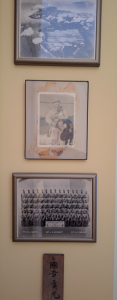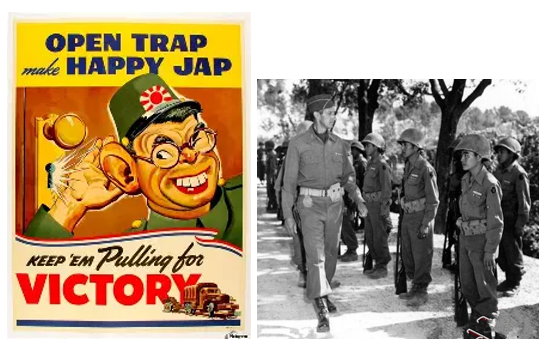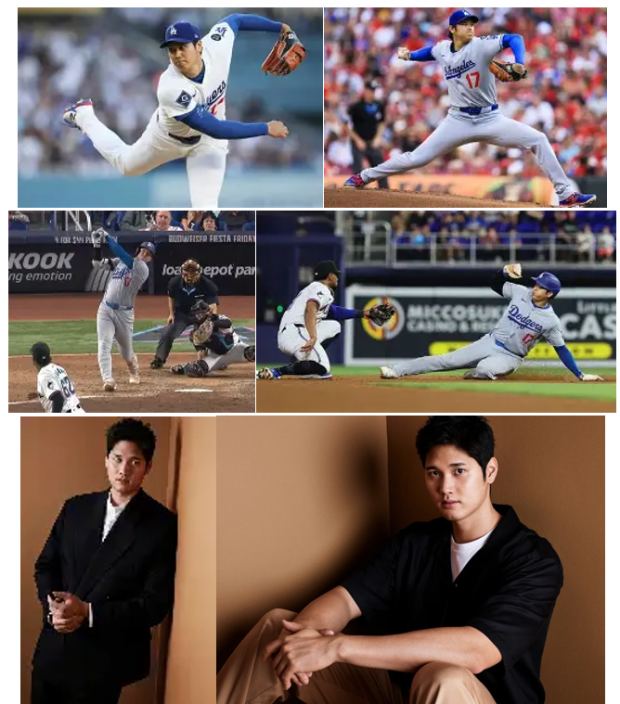I recently visited my brother. On a wall in his house is this small display in remembrance of our father’s war experience (see photo below). My dad was a gentle guy, he became a general practitioner who made house calls in the middle of the night. I believe he worked too hard for his patients because he not only worked everyday including weekends (from my childhood memories), but because he died of a heart attack at 42. Somehow he ended up in the Marines during WWII. He never fired his gun at a human being, though from his letters he did enjoy shooting. He was trained as a radar operator and sent to Tinian Island (the top image). He arrived there after the fighting ceased. He saw dead bodies of Japanese soldiers and took a bayonet home as a souvenir, though they were often booby trapped. The only action he saw was from Japanese aerial attacks. He did witness several crashes of American bombers returning to the base which in later life made him afraid to fly.

From top to bottom: Tinian, my dad, his unit in training camp, and a Japanese souvenir.
Many decades after my father’s passing I had a conversation about the use of the atomic bombs during the war with my mother. She saw the absolute necessity to use them to save the lives of American soldiers like my dad (though they were not a couple at that time). She showed no remorse for the tens of thousands of civilian deaths. I suspect that she was influenced by anti-Japanese propaganda though she had a love of Japanese gardens and design in general. See examples of this propaganda below. The clear goal was to dehumanize the Japanese people, depicting them as small (they were but grew taller with better nutrition after the war), sullen, buck toothed and ugly.

The war propaganda depicted Japanese people as small, sullen, buck toothed and ugly.
How to Spot a Jap (1942) pamphlet.
I have been a serious baseball fan since childhood. I know that baseball was an integral part of American culture in the 1940s as explained in this essay; Baseball in Wartime: How WWII Reshaped America’s Favorite Pastime, “Finally, WWII helped cement baseball’s role in American identity. The sport mirrored the resilience and adaptability of the American spirit. It played a role in boosting morale and national pride, both crucial during a time of global conflict. The post-war period saw baseball firmly established as America’s national pastime, a symbol of American culture and values.” Even Japanese Americans forced into concentration camps played baseball.

From the Visalia Times-Delta, “this photo shows a baseball game at Manzanar Internment Camp around 1943. In September 1942, more than 10,000 Japanese Americans were crowded into 504 barracks organized into 36 blocks at the camp after the attack on Pearl Harbor.”
These musings about my parents, WWII, propaganda and baseball were instigated by Shohei Ohtani, the Japanese baseball player now with the Los Angeles Dodgers. He is arguably the most talented player in the history of the game; hitting, pitching, running, tall and handsome. I wonder what my parents, and all of their Greatest Generation cohort, would have thought of him compared to their concept of the Japanese in 1945. Would this real Japanese person dispel the propagandist view of the Japanese people?

The most talented baseball player ever, pitches like Nolan Ryan, hits homeruns like Babe Ruth, steals bases like Maury Wills, all with movie star good looks.
Today the propaganda is of a different style than the 1940s, but it can be as virulent. Be it against Russians, Chinese, Iranians, Palestinians, or Israelis there is language (much less today in images) that degrades their humanity. The clear and present danger is that this propaganda, like those of the past, will lead to potential war crimes including the use of nuclear weapons. Everyone should think hard about the dangers of propaganda induced bigotry.





